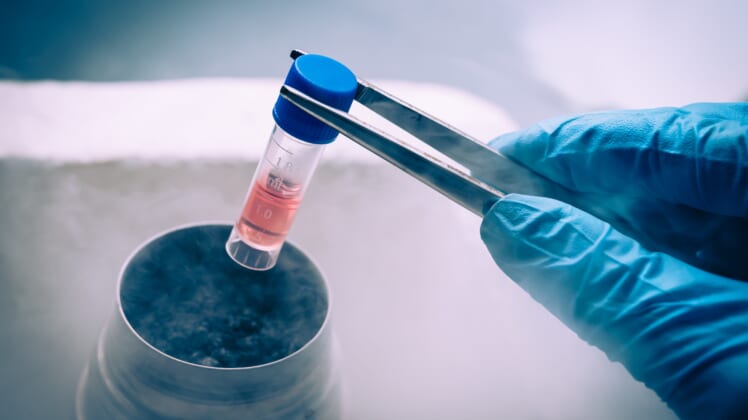Stem Cell Therapy ‘Miracle’ Cure for Cerebral Palsy?

When your child is diagnosed with a lifelong disease, you don’t always expect a miracle. For cerebral palsy, though, there’s a treatment that might run just short of one.
In a recent clinical trial, Dr. Joanne Kurtzberg and her research team from Duke University Medical Center explored the use of stem cells for these children (1).
Unlike other trials, this one used stem cells from the child’s own cord blood. Without the need to retrieve cells from the child, patients could get treated more quickly and with less hassle.
But did the treatment work? You bet.
Children who received stem cells in the trial improved far beyond what researchers had hoped. And one year later, the children were still continuing to improve.
Changing Lives
One great example of how far these suffering children improved is a little California girl named Grace.
Grace Underwood couldn’t get in on the clinical trial, says an article by Americord. But her parents raised the money for Duke’s “compassion treatment” anyway.
After just a few sessions, Grace had improved tremendously. She can now perform more challenging tasks, such as holding crayons or climbing stairs.
Many more children like Grace are thriving after getting treatment. No doubt, it’s building hope for the future of cerebral palsy.
Children all over the United States could benefit from such effective stem cell treatment. Cerebral palsy is the most common motor disability in childhood, according to the Centers for Disease Control and Prevention.
As many as 1 out of every 323 children has the condition, and studies suggest a relationship between low birth weight or prematurity. Getting sufficient oxygen is also a factor.
Deeper into Research
As far as stem cell therapy goes, this option of giving stem cells through a patient’s own cord blood shows little risk. Researchers demonstrated its safety in over 180 children before moving onto children with cerebral palsy.
Then, researchers selected 63 children with a variety of characteristics related to cerebral palsy.
The children were randomized according to the timing of treatment, and some were given placebo injections to confirm the treatment’s efficacy.
Next, researchers measured the result of their work using the Gross Motor Function Measure as well as an MRI.
Interestingly, both the placebo and stem cell groups improved after 1 year. However, those who received higher doses of cord blood improved significantly more.
According to Duke Health, lead author Jessica Sun, M.D., mentioned how these improvements can seem small at first. Still, little changes such as turning the head can have drastic effects on the child’s function—more than you might think.
Cord-banked stem cell therapy is a huge step in the right direction for cerebral palsy patients. In addition, Duke Health reports that researchers are looking into using donor cells for children without cord-banked stem cells.
This study was funded by the Robertson Foundation and The Marcus Foundation. It was also published in the journal Stem Cells Translational Medicine in 2017.
